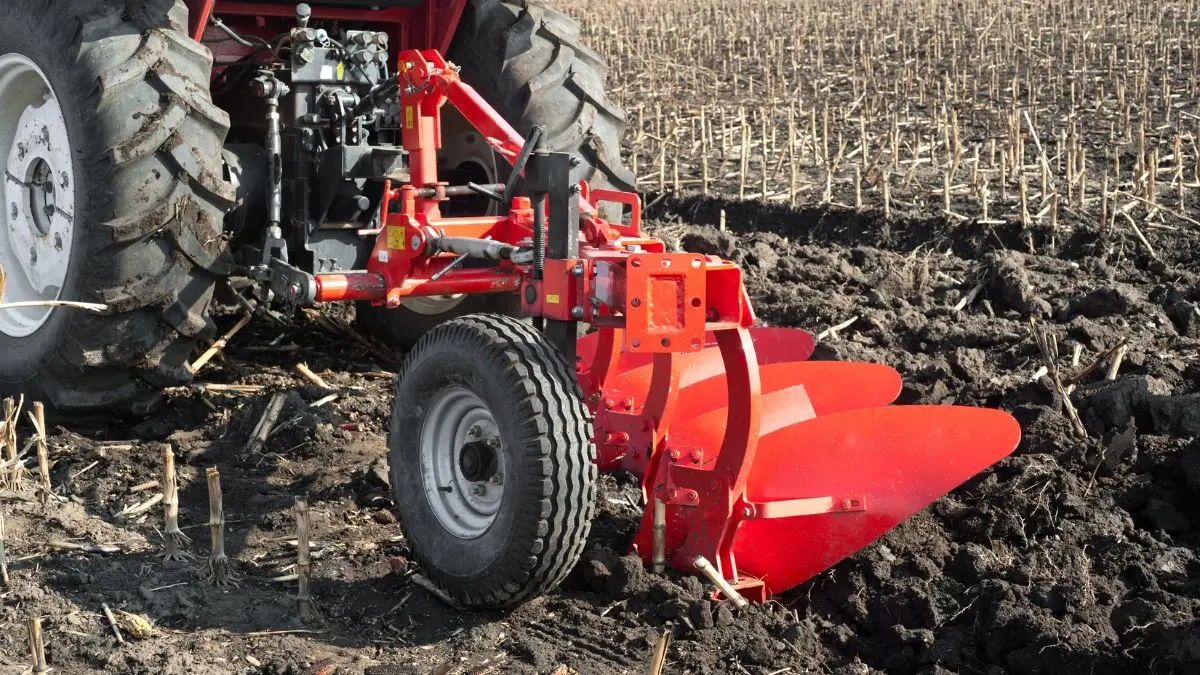Choosing the Right Plow: A Small Farm’s Guide to Plowing Equipment

Choosing the right plow for your small farm is more than just picking a piece of equipment, it’s about finding a reliable partner for your soil. With so many options out there, it can get a bit tricky to decide. But don’t worry, we’re here to break it down for you, keeping it simple and straight to the point. We’ll guide you through the essentials, helping you match your farm’s needs with the perfect plowing buddy.
Understanding Your Farm’s Needs
Let’s dive deeper into understanding your farm’s needs. When you’re looking at your land, it’s not just about how much space you have. You need to think about the types of crops you want to grow and how your soil behaves throughout the seasons. For example, if you’re planning on growing crops that need deep root systems, you’ll need a plow that can turn the soil deeply and thoroughly. On the other hand, if you’re working with more delicate soil or planning on a crop rotation that includes lighter plants, a less invasive plow might be the way to go. The key here is to match the plow’s capabilities with what your farm actually needs to thrive, not just now but in the future too.
Now, consider the layout and topography of your land. If you’ve got a lot of hills and slopes, you’re going to need a plow that can handle that kind of terrain without causing erosion or damaging the soil structure. Pay close attention to how water moves across your land. Areas that hold water longer might need a different plowing approach to prevent waterlogging and ensure that your crops get just the right amount of moisture. It’s all about finding that balance and choosing equipment that helps maintain or even improve the health of your soil.
Types of Plows: Pros and Cons
Plows come in all shapes and sizes, each designed for specific tasks and soil types. Understanding the strengths and weaknesses of each can save you a lot of time and resources in the long run.
Moldboard Plows
Moldboard plows are the traditional workhorses of the farming world. They’re designed to cut deep into the soil, turning it over completely. This is particularly useful for incorporating crop residues back into the soil, which can improve soil health and fertility over time. They’re great for preparing a clean slate for new crops, especially in fields with heavy weed infestations or previous crop residues.
However, moldboard plows can be quite aggressive. They can disturb the soil structure, leading to erosion if not used carefully, especially on slopes. They also require a significant amount of power to operate, which means you’ll need a strong tractor. This can be a downside if you’re working with smaller machinery or are conscious about fuel consumption.
Chisel Plows
Chisel plows offer a more gentle approach. They work by puncturing the soil and loosening it without turning it over completely. This method helps maintain the natural soil structure and is less likely to cause erosion. It’s a great choice for sustainable farming practices, as it promotes water infiltration and reduces runoff.
The downside? Chisel plows might not be the best choice for fields that need a major overhaul or have a lot of dense weed growth. They might not cut it, literally, in fields that require deep soil turnover. Plus, while they’re easier on the soil, they might not break up hardpan layers as effectively as moldboard plows.
Disk Plows
Disk plows use concave metal disks to cut through the soil. They’re particularly useful in areas with hard or stony ground where other plows might struggle. Disk plows can cut through residue and roots easily, making them ideal for land with heavy brush or weeds.
However, they might not invert the soil as thoroughly as moldboard plows, which can be a downside if complete soil turnover is desired. They also tend to require a significant amount of power, similar to moldboard plows.
Subsoiler Plows
Subsoiler plows are designed to break up compacted soil layers deep below the surface without turning the topsoil. This improves water drainage and root penetration. They’re great for revitalizing fields that have been compacted over time due to heavy machinery traffic or repeated cropping.
The limitation of subsoilers is that they don’t provide surface tillage, so they’re often used in conjunction with other plowing or tilling methods.
Rotary Plows (or Rotary Tillers)
Rotary plows use a set of rotating tines to churn and aerate the soil. They’re excellent for preparing a fine seedbed, especially in gardens or smaller farm plots. Rotary plows mix the soil well and can help incorporate compost or manure into the soil.
The downside is that they can be quite aggressive, potentially leading to soil structure breakdown if overused. They also typically cover smaller widths than other plows, making them less efficient for large fields.
Table for Plow Types
| Plow Type | Best For | Considerations |
|---|---|---|
| Moldboard | Deep turning, residue burial | Can cause erosion, needs strong tractor |
| Chisel | Minimal disturbance, aeration | Less effective in dense weed areas, hardpan |
| Disk | Stony, hard soil, cutting residue | Less soil inversion, requires power |
| Subsoiler | Breaking up compacted layers | No surface tillage, used with other tillage methods |
| Rotary (Tiller) | Fine seedbed, small areas | Can disturb soil structure, limited width |
Soil Types and Plow Choices
Different soils require different approaches for optimal preparation and health:
Sandy Soil: Light and well-draining, sandy soil is less prone to compaction and can often be worked with lighter equipment like chisel plows or rotary tillers for minimal disturbance.
Clay Soil: Heavy and compact, clay soil may require the use of moldboard or disk plows to adequately break up and aerate the soil, improving drainage and root penetration.
Loamy Soil: Being a balance of sand, silt, and clay, loamy soil is ideal for most agricultural purposes and can be worked with a variety of plows, though the choice depends on the specific balance of components.
Rocky Soil: Characterized by a large number of stones or rocks, this soil type is best worked with a disk plow, which can handle the rough terrain without damage.
Peat Soil: Consisting largely of organic matter, peat soils are delicate and require gentle plowing methods, such as using a chisel plow, to avoid disturbing the soil structure too much.
Table for Soil Types and Plow Choices:
| Soil Type | Suitable Plow Types |
|---|---|
| Sandy | Chisel, Rotary |
| Clay | Moldboard, Disk |
| Loamy | Moldboard, Chisel, Disk, Rotary |
| Rocky | Disk |
| Peat | Chisel, Rotary |
Maintenance and Care Tips for Your Plow
Taking care of your plow ensures it’s always ready when you need it and extends its life significantly. Start with the basics:
- Check and Tighten Bolts and Fasteners: Vibration from plowing can loosen parts over time. Regular checks can prevent damage and wear.
- Sharpen the Plow Blades: Dull blades make your tractor work harder and can lead to uneven plowing. Keeping them sharp ensures clean cuts and efficient work.
- Lubricate Moving Parts: This reduces wear and tear, keeps the plow moving smoothly, and prevents rust and corrosion.
After each use, take the time to clean off any soil and debris. This not only keeps the plow in good condition but also helps prevent the spread of weeds and diseases from one field to another.
Budgeting for Your Plow: Finding Value
When it comes to budgeting for a plow, think long-term. It’s not just about the sticker price; it’s about the value it brings to your farm. A good plow can improve your soil health, increase crop yields, and save you time and labor. So, consider what you’re getting for your money. A more expensive plow might offer features that save you time or do a better job with your specific soil type, which can be worth the extra cost in the long run.
Don’t forget to factor in maintenance and repair costs. A cheaper plow might end up costing you more if it needs frequent repairs or replacements. Sometimes, spending a bit more upfront for quality can save you money and headaches down the line.
Lastly, consider your financing options. There are often financing plans available for agricultural equipment that can make the upfront cost more manageable. And don’t overlook the possibility of buying a used plow in good condition. It can be a great way to get the equipment you need at a more affordable price, as long as you do your due diligence to ensure it’s in good working order.

